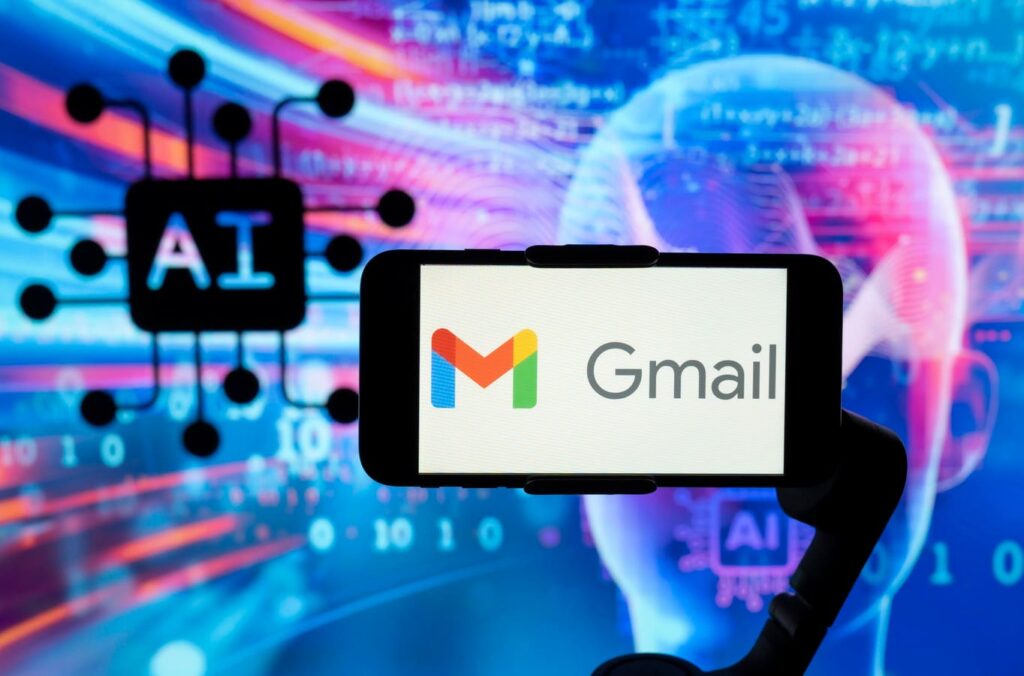Another Gmail AI hack attack confirmed.
SOPA Images/LightRocket via Getty Images
Update, Feb. 1, 2025: This article, initially published on Jan. 30, has been revised to include additional mitigation tips for identifying AI-driven deepfake threats, insights from Google regarding the advanced Gmail attack, and commentary from a security expert.
Reports indicate that hackers are utilizing various tactics, including disguising themselves openly, employing avatars for unique attacks, and executing ongoing threats to bypass two-factor authentication against Google users. This situation creates an advantageous environment for cybercriminals; they aim to steal Gmail login credentials through malicious AI means.
Latest Gmail Threat Deemed ‘Highly Sophisticated Phishing Attack’
Consider receiving a phone call from a number with Google’s caller ID, where a support technician alerts you that your account has been compromised and temporarily blocked. The technician then sends you an email from an authentic Google domain to confirm this information. If you verify the phone number and find it listed on Google, you might feel secure and hesitate to call back. This was nearly the fate of Zach Latta, founder of Hack Club, who nearly fell victim to an AI-driven attack before realizing the deception.
If this scenario sounds familiar, it’s because similar AI-powered Gmail threats were highlighted in earlier warnings. The methodology remains consistent, and all 2.5 billion Gmail users should be vigilant and maintain awareness against these sophisticated attacks.
Spencer Starkey, a vice president at SonicWall, emphasized the need for companies to remain agile in their cybersecurity strategies to adapt to the continuously evolving tactics employed by cybercriminals. This includes regular security assessments and establishing a comprehensive incident response plan.
How to Protect Your Gmail Credentials from AI Threats
Standard phishing protection strategies may fall short against these advanced AI attacks. Latta described the attacker as sounding extremely realistic, which aligns with previous accounts of sophisticated impersonations. The previous target was a security consultant, an edge that likely helped prevent their downfall; however, most users may lack similar expertise. So, how can you safeguard your Gmail account?
The rapid evolution of new attack methods makes them increasingly challenging to identify, according to Starkey. Businesses must monitor their networks thoroughly for any suspicious activities, utilizing security tools to track login attempts and device usage. For individual users, it’s crucial to remain calm if approached by individuals claiming to represent Google support—disregard such interactions, as they are unlikely to make unsolicited calls.
The Benefits of the Advanced Protection Program and Google Passkeys
Among the various features available to protect your Gmail account, the Advanced Protection Program stands out as a critical tool, particularly effective against targeted attacks. This program, designed for high-risk users such as journalists and activists, requires participants to use a passkey or hardware security key to log in, ensuring unauthorized users cannot access the account even if they know the username and password.
When applying for new apps or services, users often need to grant access to their Google account data. While inherent protections are in place, the Advanced Protection Program elevates security by limiting access to only Google and verified third-party applications with user consent. Additionally, signing up for this program might lead to an increased number of alerts or warnings during downloads or installations.
Google has stated that they have suspended accounts linked to the recent scams, and while they have not observed signs of widespread behavior, they are strengthening defenses to further protect users against this type of exploitation.




